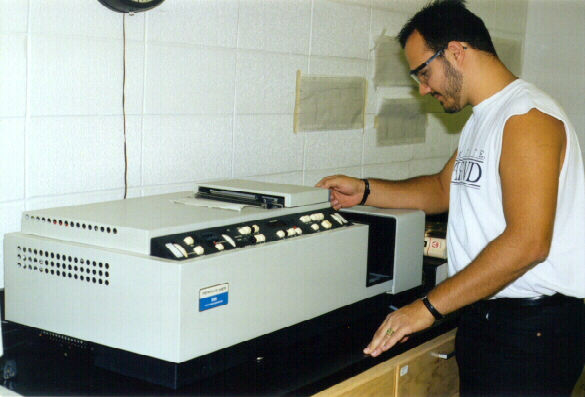|
|
|
WELCOME TO THE PHARMACY WORLD
Molecules
are able to absorb electromagnetic energy in the infrared (IR) region of the
el ectromagnetic spectrum. The IR radiation has the appropriate level of energy
to excite vibrational movement of molecular bonds. Each type of bond will
absorb IR radiation at slightly different frequency from one another. The
structure of a molecule can be determined by observing the different vibrational
signals. An IR spectra is obtained by irradiating a sample with an IR source
of light. The light passes through the sample, which can be in solution or
contained within a salt plate, and then onto an IR detector. The spectrum is
analyzed by examining at which frequency the peaks occur. Different peak
frequencies indicate different type of vibrational motion and hence, different
types of chemical bonds. The peak intensities are usually denoted as percent
transmittance (%T), which compares the amount of light absorbed compared to the
amount of IR light that was not absorbed. The frequencies are normally listed
in wavenumbers (in units of reciprocal centimeters).
ectromagnetic spectrum. The IR radiation has the appropriate level of energy
to excite vibrational movement of molecular bonds. Each type of bond will
absorb IR radiation at slightly different frequency from one another. The
structure of a molecule can be determined by observing the different vibrational
signals. An IR spectra is obtained by irradiating a sample with an IR source
of light. The light passes through the sample, which can be in solution or
contained within a salt plate, and then onto an IR detector. The spectrum is
analyzed by examining at which frequency the peaks occur. Different peak
frequencies indicate different type of vibrational motion and hence, different
types of chemical bonds. The peak intensities are usually denoted as percent
transmittance (%T), which compares the amount of light absorbed compared to the
amount of IR light that was not absorbed. The frequencies are normally listed
in wavenumbers (in units of reciprocal centimeters).
